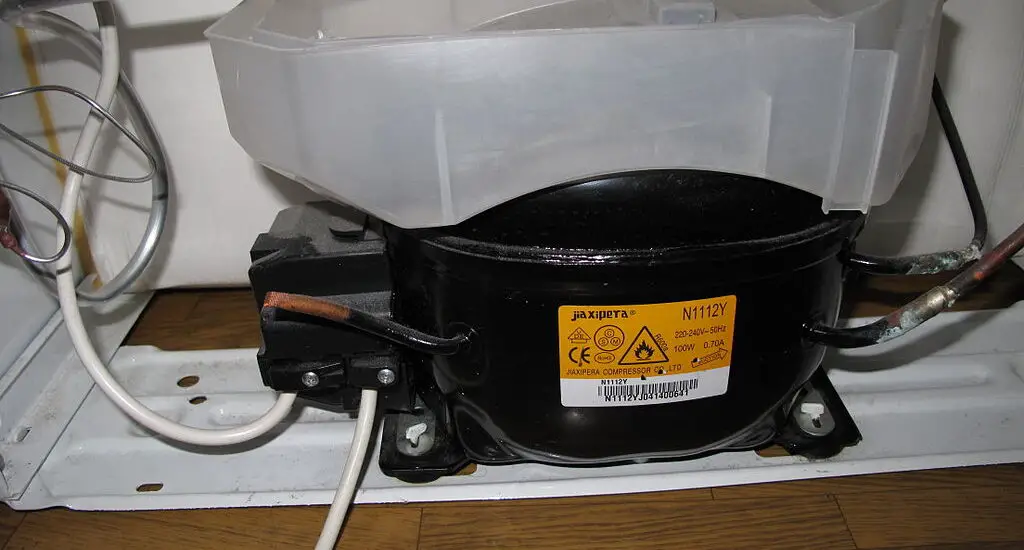What is a refrigeration compressor? It’s the backbone of any cooling system. A refrigeration compressor is a mechanical device that increases the pressure of refrigerants or gases by reducing their volume. Its purpose? To keep your food chilled, your AC running, and your industrial processes cool.

Table of Contents
What Is a Refrigeration Compressor?
At its core, a refrigeration compressor is a workhorse. It’s a mechanical device that increases the pressure of a gas by reducing its volume. Its primary job is to compress the refrigerant and circulate it through the system, thereby allowing heat exchange and cooling.
The Purpose of a Refrigeration Compressor
Why do we need a refrigeration compressor? In a nutshell, they’re the heart of any refrigeration or cooling system. They pump refrigerant through the system, helping it absorb, transport, and discard heat. Without them, your refrigerator wouldn’t keep your groceries fresh, and your air conditioner wouldn’t keep you comfortable.
Types of Refrigeration Compressors
Did you know there’s more than one type of refrigeration compressor? They come in several forms, each with its strengths and suited to different applications.
Reciprocating Compressors
Reciprocating compressors, or piston compressors, are a common type of compressor. These machines use a piston inside a cylinder to compress the refrigerant. Think of it like the heart pumping blood – a steady, consistent cycle that keeps everything running.
Screw Compressors
Screw compressors work a little differently. They use two interlocking screws that rotate to compress the refrigerant. The beauty of these compressors is their smooth, continuous operation, making them ideal for industrial applications.
Centrifugal Compressors
Centrifugal compressors, often used in large cooling systems, employ a rotating impeller to compress the refrigerant. It’s like a high-speed merry-go-round for gases, turning kinetic energy into pressure.
Rotary Compressors
Rotary compressors, common in smaller systems like household ACs, use a rotating mechanism to compress the refrigerant. They’re like the little siblings of the compressor family – small but mighty!
Check out these other related articles…
Compressor Energy Efficiency: Your Comprehensive Guide
Compressor Performance Curve: Your Ultimate Guide
Compressor Isentropic Efficiency Formula: An In-Depth Guide
What is Compressor Efficiency? Everything You Need to Know
Compressor Polytropic Efficiency Formula: A Detailed Guide
How Does a Refrigeration Compressor Work?
Imagine the refrigeration compressor as a kind of traffic cop. It directs the flow of refrigerant, regulating its pressure and ensuring it gets where it needs to go. But how exactly does it do this? It’s all about pressure. By compressing the gas, the compressor increases its pressure and pushes it through the system.
Key Components of a Refrigeration Compressor
A refrigeration compressor is more than just a single component. It’s a symphony of parts working together, each playing a crucial role in the process.
Motor
The motor is the driving force of a refrigeration compressor. It’s the engine that powers the compressor, enabling it to carry out its all-important task of compressing the refrigerant.
Piston and Cylinder
In a reciprocating compressor, the piston and cylinder play a starring role. The motor drives the piston, which moves up and down within the cylinder. This movement is what compresses the refrigerant, similar to how a syringe works when you push the plunger.
Valves
The valves in a refrigeration compressor act like gatekeepers. They control the flow of refrigerant, allowing it to enter the compressor and then exit at the right times. It’s a delicate balancing act that ensures the compressor functions efficiently.
Maintenance and Troubleshooting of a Refrigeration Compressor
Like any piece of machinery, refrigeration compressors need a bit of TLC. Proper maintenance and knowing how to troubleshoot common issues can go a long way in ensuring the longevity and efficiency of your compressor.
General Maintenance Tips for a Refrigeration Compressor
So how do you keep a refrigeration compressor happy? It’s all about regular check-ups. Keeping the compressor clean, ensuring it’s properly lubricated, and regularly checking for signs of wear and tear can make a big difference. And don’t forget, if you’re not sure, get a professional to take a look. It’s better to be safe than sorry!
Troubleshooting Common Issues
Even with the best care, sometimes things go wrong. Recognizing common issues and knowing how to fix them (or when to call in the pros) is a handy skill. Whether it’s unusual noises, a failing motor, or a leaky valve, being able to identify these problems early can save you time and money in the long run.